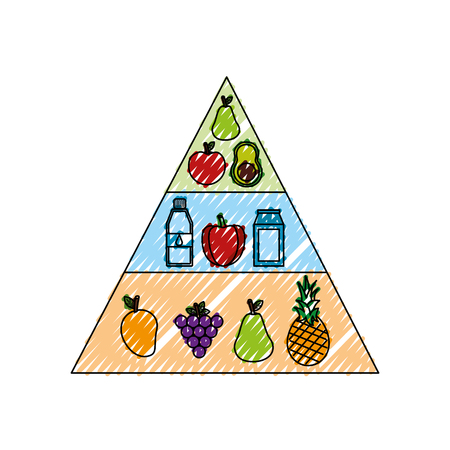The Science Behind Functional Foods
In today’s fast-paced American lifestyle, convenience and health don’t always go hand in hand—but functional foods are changing that narrative. Functional foods are more than just sources of basic nutrition; they contain bioactive compounds that provide additional health benefits beyond essential nutrients. These foods include familiar items like berries, nuts, yogurt with probiotics, leafy greens, and fatty fish, all of which are easy to incorporate into a busy routine.
Scientific research supports the idea that regular consumption of functional foods can play a key role in supporting longevity and overall well-being. For example, antioxidants in berries help combat oxidative stress linked to aging and chronic disease. Probiotics in fermented foods support gut health, which is closely tied to immune function and mental clarity—two essentials for thriving amid daily demands. Omega-3 fatty acids found in salmon and walnuts have been shown to reduce inflammation and promote heart health.
Incorporating these power-packed foods into your meals doesn’t require elaborate meal prep or complicated recipes. The science is clear: a diet rich in functional foods can help manage stress, improve energy levels, and even support healthy aging. As Americans juggle work, family, and personal goals, making small shifts toward functional ingredients offers an accessible pathway to better health and longer life.
Pantry Essentials for a Busy Life
Keeping your pantry stocked with functional foods is the first step to making healthy eating effortless, even on the busiest days. In the fast-paced American lifestyle, convenience matters—but so does nutrition. By choosing foods that are both nutrient-dense and quick to prepare, you can support long-term wellness without sacrificing time or taste.
Must-Have Functional Foods for Every Pantry
Functional foods offer more than basic nutrition—they provide health benefits that may reduce disease risk and promote longevity. Below is a list of pantry staples perfectly suited to busy lives and American eating habits:
| Food Item | Why It’s Functional | How to Use Quickly |
|---|---|---|
| Canned Beans (black, chickpeas, lentils) | Rich in fiber and plant-based protein; heart-healthy | Add to salads, soups, tacos, or make hummus |
| Oats (old-fashioned or instant) | High in beta-glucan for heart health; energy-boosting carbs | Overnight oats, smoothies, quick breakfast bowls |
| Nuts & Seeds (almonds, chia, flaxseed) | Healthy fats, antioxidants, omega-3s | Top yogurt, salads, or blend into smoothies |
| Canned Salmon & Tuna (in water) | Omega-3 fatty acids for brain & heart health | Toss into salads, sandwiches, or grain bowls |
| Whole Grain Pasta & Brown Rice | Sustained energy from complex carbs and B vitamins | Quick dinners with veggies and lean proteins |
| Shelf-Stable Plant Milks (soy, almond) | Dairy alternative rich in vitamins and minerals | Pourover cereal, blend in shakes, or use for cooking |
| Dried Fruits (raisins, cranberries) | Nutrient-dense; good source of antioxidants and iron | Add to trail mix, oatmeal, or snack straight from the bag |
| Spices & Herbs (turmeric, garlic powder) | Anti-inflammatory properties and flavor boosters | Season any meal quickly for added health benefits |
The Key: Versatility and Accessibility
Select items that are easy to find at most U.S. grocery stores and fit seamlessly into classic American dishes. For example, canned beans can upgrade chili night or speed up a Tex-Mex-inspired salad. Oats aren’t just for breakfast—use them as a base for healthy muffins or energy bites that you can grab on the go.
Time-Saving Tips for Stocking Your Pantry:
- Buy in bulk: Save money on staples like rice, pasta, nuts, and oats.
- Select multipurpose items: Choose foods that work across multiple meals—think whole grains for both dinner sides and breakfast porridge.
- Rotate stock: Keep older items up front so nothing goes to waste.
A Smart Pantry Equals Smart Nutrition Choices
A well-stocked pantry makes it easier to whip up nutritious meals at a moment’s notice. With these functional food essentials on hand, you’re always prepared to nourish your body—even when life gets hectic. Start building your foundation for longevity by filling your kitchen with these everyday superfoods tailored for the American lifestyle.

3. Breakfasts that Fuel Your Day
Starting your morning with a functional, nutrient-dense breakfast is a smart strategy for anyone leading a busy lifestyle. Choosing the right foods in the morning sets the tone for sustained energy and focus throughout your day. Instead of reaching for sugary pastries or skipping breakfast altogether, opt for quick recipes packed with longevity-boosting ingredients commonly found in American kitchens.
Oats: The Heart-Healthy Staple
Old-fashioned oats are a classic choice—theyre rich in soluble fiber, which supports heart health and keeps you feeling full longer. For a speedy option, try overnight oats: mix oats with low-fat milk or almond milk, add chia seeds, then top with fresh berries and a drizzle of honey. This no-cook breakfast can be prepped in advance for grab-and-go mornings.
Berries: Antioxidant Powerhouses
Blueberries, strawberries, and raspberries are loaded with antioxidants and vitamins that promote healthy aging. Add them to Greek yogurt for an instant parfait. Layer Greek yogurt (high in protein and probiotics) with mixed berries and sprinkle with walnuts or flaxseeds to boost omega-3 intake—perfect for brain health and reducing inflammation.
Eggs: Versatile Protein Source
Eggs are an American breakfast staple for good reason—they offer high-quality protein and essential nutrients like choline. Scramble two eggs with spinach and cherry tomatoes or prepare egg muffins ahead of time by baking whisked eggs with chopped veggies in muffin tins. These portable options make it easy to eat well even on the busiest mornings.
Quick Tips for Success
- Keep single-serve Greek yogurt cups, pre-washed berries, and hard-boiled eggs stocked in your fridge.
- Batch-prep overnight oats at the beginning of the week to save time.
- Add a handful of nuts or seeds to any breakfast for extra healthy fats and satiety.
Nourish Longevity Through Breakfast
Functional breakfasts dont have to be complicated or time-consuming. With these easy recipes featuring oats, berries, Greek yogurt, and eggs, you can fuel your body efficiently while supporting long-term wellness—even on your busiest days.
Lunches and Snacks On-the-Go
When your schedule is packed, making healthy choices at lunchtime or snack time can be a challenge. But with a little planning, you can enjoy functional foods that fuel your body, support longevity, and keep you energized throughout the day. Below are some quick and nutritious ideas designed for busy Americans who need portability without sacrificing nutrition.
Easy-to-Pack Lunches
Salads in jars are a game changer for meal prep. Layering ingredients keeps them fresh until youre ready to eat—just shake and enjoy! Try including leafy greens, whole grains like quinoa, lean proteins (think grilled chicken or chickpeas), and antioxidant-rich veggies. Here’s a simple formula:
| Layer | Ingredients | Functional Benefit |
|---|---|---|
| Bottom | Dressing (olive oil & vinegar) | Heart-healthy fats |
| Second | Hearty veggies (carrots, cucumbers) | Fiber, hydration |
| Third | Protein (chicken, beans, tofu) | Sustained energy |
| Fourth | Whole grains (quinoa, brown rice) | B vitamins, slow carbs |
| Top | Leafy greens (spinach, kale) | Antioxidants, micronutrients |
Nutrient-Packed Snacks for Busy Lifestyles
No time for a sit-down meal? Homemade energy bars and wrap sandwiches are perfect for on-the-go snacking. Look for recipes that include nuts and seeds for omega-3s, dried fruit for natural sweetness, and oats or whole wheat wraps to provide lasting fullness.
Smart Snack Combinations:
- DIY Trail Mix: Almonds, walnuts, pumpkin seeds, dried cranberries—rich in healthy fats and polyphenols.
- Wrap Sandwiches: Whole grain tortilla + hummus + turkey slices + spinach = a balanced bite with protein and fiber.
- No-Bake Energy Bars: Oats, nut butter, chia seeds—easy to make ahead and loaded with nutrients that promote brain health.
The Bottom Line
Packing your lunch or snacks doesn’t have to mean sacrificing nutrition. By choosing functional foods that are easy to prepare and transport, you’ll stay full and focused—no matter how hectic your day gets. Prioritize variety and balance in every portable meal to optimize both convenience and longevity benefits.
5. Dinners for Recovery and Longevity
After a demanding day, dinner is your body’s prime opportunity to refuel, repair, and prepare for tomorrow. For Americans living fast-paced lives, functional food-based dinners can make a world of difference in supporting long-term health and recovery. By focusing on lean proteins, whole grains, and a generous serving of colorful vegetables, you’re not just eating to satisfy hunger—you’re investing in your longevity.
Lean Proteins: Building Blocks for Recovery
Lean proteins—such as grilled chicken breast, wild-caught salmon, or plant-based options like tofu and lentils—are essential for muscle repair and immune support. In the U.S., incorporating skinless turkey or grass-fed beef into stir-fries or grain bowls keeps meals familiar while boosting nutritional value. Aim to fill about a quarter of your plate with these high-quality proteins at dinner.
Whole Grains: Sustained Energy and Heart Health
Instead of refined grains, reach for nutrient-rich options like quinoa, brown rice, farro, or barley. These whole grains provide lasting energy and dietary fiber that supports digestion and heart health. Try building a quick Buddha bowl by topping cooked quinoa with roasted veggies and your protein of choice—a perfect way to blend convenience with nutrition.
Colorful Vegetables: Antioxidant Powerhouses
Pile your plate high with an array of vegetables—think broccoli, sweet potatoes, kale, bell peppers, and carrots. The more colors you add, the wider range of antioxidants and phytonutrients you’ll get to combat oxidative stress and promote healthy aging. Roasting a tray of mixed veggies tossed with olive oil, garlic, and herbs is both simple and delicious.
Sample Functional Food Dinner Recipe: Salmon & Veggie Grain Bowl
Start with a base of cooked brown rice or farro. Top with baked wild-caught salmon seasoned with lemon and dill. Add steamed broccoli florets, shredded carrots, cherry tomatoes, and sliced avocado. Finish with a drizzle of extra-virgin olive oil and a sprinkle of pumpkin seeds for healthy fats and magnesium.
Quick Tip for Busy Evenings:
Meal prep is key! Grill extra chicken breasts or roast an additional pan of vegetables at the start of the week so you can assemble nourishing dinners in minutes. With just a little planning, functional food-based dinners become realistic—even on your busiest nights—helping you recover today while building resilience for the future.
6. Tips for Making Fast Food Functional
Even when your schedule is packed, you can transform fast food and convenience meals into more functional, nutrient-rich options with a few smart strategies. Here’s how to make the most out of every meal—even on your busiest days.
Choose Smarter Proteins
Opt for grilled over fried proteins whenever possible. Grilled chicken, turkey, or fish are often available at most American fast food chains and provide lean protein without excess saturated fat. If plant-based is your thing, look for black bean or veggie burgers instead of processed meat patties.
Add More Veggies
Ask for extra vegetables on sandwiches, burrito bowls, salads, or pizzas. Many places will happily add spinach, tomatoes, peppers, onions, or mushrooms at no extra cost. These fiber- and antioxidant-rich additions support gut health and longevity.
Swap Out Sides
Instead of fries or chips, choose side salads, fruit cups, or yogurt parfaits where available. These options deliver vitamins and minerals that promote healthy aging—and they help you feel fuller longer.
Upgrade Your Beverages
Sugary sodas and sweet teas can spike your blood sugar and provide empty calories. Swap them for unsweetened iced tea, water with lemon, or sparkling water with a splash of juice. These choices hydrate you without sabotaging your nutrition goals.
Mind the Sauces and Dressings
Sauces and dressings can quickly turn a healthy meal into a calorie bomb. Ask for these on the side so you control how much you use—or go for lighter options like salsa, mustard, or vinegar-based dressings to keep things flavorful but functional.
Smart Ordering Hacks
Don’t be shy about customizing! Request whole grain buns or wraps where possible, skip the cheese or bacon add-ons, and ask if your meal can be baked or steamed instead of fried. Many American eateries are used to special requests—your health is worth it!
Meal Prep Shortcuts
If you rely on frozen meals during busy weeks, boost their nutritional value by stirring in fresh spinach before microwaving or topping with pre-chopped veggies from the salad bar. A sprinkle of nuts or seeds adds healthy fats and crunch in seconds.
With a little creativity and these quick swaps, even fast food can become part of a functional diet that supports energy levels and longevity—no matter how hectic life gets.
7. Incorporating Functional Foods Into Family Life
Bringing functional foods into your family’s daily meals doesn’t have to be complicated or time-consuming—even with picky eaters and packed schedules. With a little creativity and some nutrition know-how, you can transform everyday dishes into nutrient-rich options that support everyone’s health and longevity.
Make It Kid-Friendly: Flavorful & Fun Approaches
Kids are more likely to embrace functional foods when they’re presented in a familiar and appealing way. Try blending spinach or kale into fruit smoothies, adding chia seeds to homemade popsicles, or mixing pureed sweet potatoes into pancake batter for a boost of fiber and antioxidants. Swap traditional pasta with whole grain or legume-based varieties for added protein and nutrients—top with a vibrant tomato sauce rich in lycopene.
Interactive Meal Prep
Getting children involved in the kitchen helps build their interest in healthy eating. Set up “DIY” food bars where kids can assemble their own wraps, salads, or grain bowls using prepped veggies, lean proteins, and flavorful sauces. Let them sprinkle hemp seeds on yogurt or oatmeal, or choose toppings like berries and nuts for extra vitamins and minerals.
Seamless Integration Into Family Favorites
You don’t need to reinvent your weekly menu; simply upgrade classic dishes. Add lentils to taco filling, toss leafy greens into casseroles, or stir fermented miso paste into soups for gut health benefits. Consider using Greek yogurt as a tangy base for dips instead of sour cream, and bake with mashed bananas or applesauce to naturally sweeten treats while increasing fiber content.
Planning Ahead for Success
Busy families thrive on planning. Batch-prep overnight oats with flaxseed and berries for quick breakfasts, keep cut-up veggies ready for snacking, and prepare double portions of stews loaded with beans and leafy greens to freeze for hectic nights. Stock the pantry with whole grains, canned salmon, nuts, and seeds so nutritious options are always within reach.
Setting the Example
Parents play a powerful role by modeling healthy choices. Enjoy new functional foods together at the dinner table, talk about how different ingredients help your body stay strong and energized, and celebrate small wins—like trying a new vegetable or swapping sugary snacks for fruit-based ones.
By making functional foods accessible, enjoyable, and part of your family’s everyday routine, you’re laying the foundation for lifelong wellness—one delicious meal at a time.


